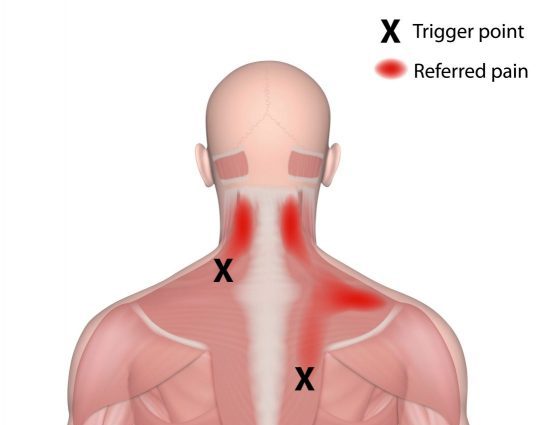Written by Katie O’Neill, SPT and Dhara Shah, PT, DPT, OCS
Trigger points are knots or “nodules” in your muscles that are tender when applying pressure to them. These trigger points are thought to form when you have a sort of energy crisis where that small portion of your muscle is not receiving enough oxygen to support the activity you are asking it to do. This energy crisis could occur, for example, when you are lifting something very heavy, but it could also occur when you are holding something light but for a prolonged period of time. Perhaps you tend to “hold your stress” in your jaw or shoulders–even stress or position is making those muscles work overtime and can lead to trigger points.
Trigger points in your muscles can cause local pain and/or pain in other areas of your body called referred pain, and each muscle has its typical referral pattern. For example, trigger points in the muscles of your neck and jaw can lead to pain that mimics a headache. Besides causing pain, these taut nodules can also lead to increased difficulty engaging those muscles which may leave you feeling weaker than usual.
So how can physical therapy help with treating your pain associated with trigger points?
Trigger-point dry needling is a procedure where a fine needle is inserted into the skin and muscle. The trigger point model is a dry needling technique that specifically targets myofascial trigger points. We use dry needling to release trigger points to relieve pain, improve range of motion, and improve the ability to perform functional tasks.
Self myofascial release is a way we can teach you to release trigger points with a lacrosse ball or foam roller. There are various techniques that can be useful in maintaining soft tissue extensibility and can be a part of your home exercise program.
Education: Educating you on why trigger points are occurring, how you can independently manage your symptoms, and preventing recurrence is our ultimate goal!


Recent Comments